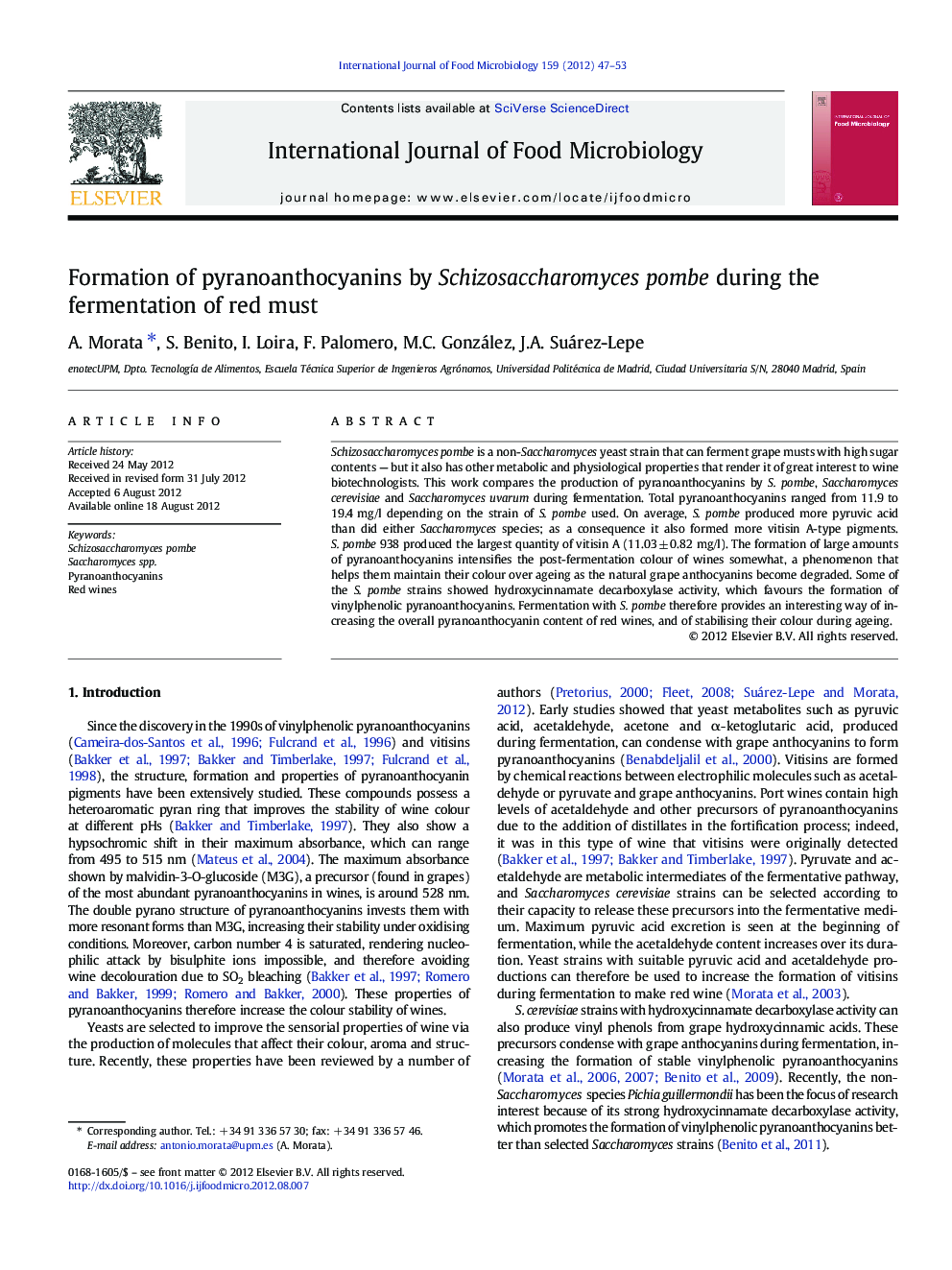| Article ID | Journal | Published Year | Pages | File Type |
|---|---|---|---|---|
| 4367372 | International Journal of Food Microbiology | 2012 | 7 Pages |
Schizosaccharomyces pombe is a non-Saccharomyces yeast strain that can ferment grape musts with high sugar contents — but it also has other metabolic and physiological properties that render it of great interest to wine biotechnologists. This work compares the production of pyranoanthocyanins by S. pombe, Saccharomyces cerevisiae and Saccharomyces uvarum during fermentation. Total pyranoanthocyanins ranged from 11.9 to 19.4 mg/l depending on the strain of S. pombe used. On average, S. pombe produced more pyruvic acid than did either Saccharomyces species; as a consequence it also formed more vitisin A-type pigments. S. pombe 938 produced the largest quantity of vitisin A (11.03 ± 0.82 mg/l). The formation of large amounts of pyranoanthocyanins intensifies the post-fermentation colour of wines somewhat, a phenomenon that helps them maintain their colour over ageing as the natural grape anthocyanins become degraded. Some of the S. pombe strains showed hydroxycinnamate decarboxylase activity, which favours the formation of vinylphenolic pyranoanthocyanins. Fermentation with S. pombe therefore provides an interesting way of increasing the overall pyranoanthocyanin content of red wines, and of stabilising their colour during ageing.
► The use of a non-Saccharomyces – S. pombe – is proposed to improve wine colour. ► The formation of pyranoanthocyanins was compared with Saccharomyces fermentations. ► Production of pyruvic acid and acetaldehyde were correlated with vitisin A and B formation. ► Influence of S. pombe in formation of vinylphenolic pyranoanthocyanins. ► The repercussion of pyranoanthocyanins in wine colour was studied.
